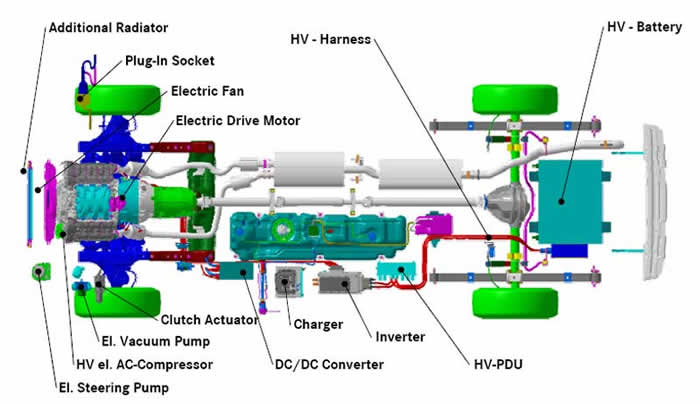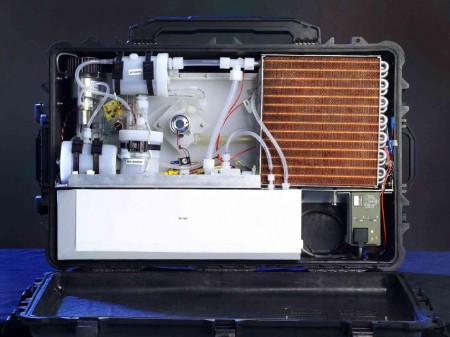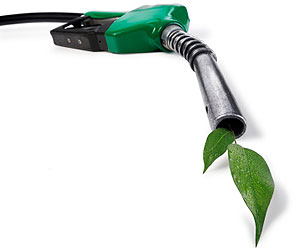While we can see the advantages of alternative fuels, they also produce some disadvantages. In our search for the ideal fuel of the future, let's look at what are the advantages of the fuels presently being developed along with the disadvantages.
Are there any disadvantages to alternative fuels?
Len Calderone for | AltEnergyMag
Alternative fuels are being developed to supplement or even replace fossil fuels. The burning of fossil fuel causes significant damage to the environment because carbon dioxide (CO2) is emitted during combustion. Such environmental contamination causes smog, acid rain, and air pollution, which not only harms the environment, but also the health of all living things. Although new sources of fossil fuel are being discovered, and previously hard to reach deposits are developed, eventually these sources will dry up.
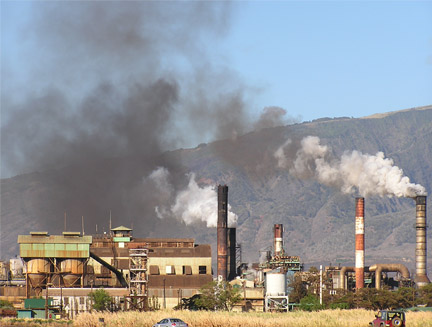
To counter the damage done by fossil fuels and assure the continuance of energy, alternative fuels are being improved. While we can see the advantages of alternative fuels, they also produce some disadvantages. In our search for the ideal fuel of the future, let’s look at what are the advantages of the fuels presently being developed along with the disadvantages.
Battery
Alternative fuel for an electric car comes in several forms - rechargeable battery, fuel cells and hybrid. A pure electric car runs on electric batteries, which are powered by one or more electric motors instead of a gasoline engine. The advantages of a pure electric motor is that it produces no air pollution whatsoever,
Another advantage of the electric motor is its ability to provide power at almost any engine speed. A fossil fuel engine must be revved up to high rpm to achieve maximum power, but an electric motor provides peak power even at low speeds, which gives an electric motor strong acceleration from a stop. Some of the other advantages of an electric motor are that the batteries can be charged with low-cost electricity, no engine stalls, with fewer parts to fail and less service.
The biggest disadvantage is the short distance that an electric vehicle can travel, usually under 100 miles. It takes about three hours to recharge the batteries and there are very few recharging stations available. Highway speed is limited to 70 mph, which is a factor should a lane change be necessary at high speed or in an emergency. Ownership costs are much higher from the price of the vehicle to the maintenance, which involves new education for a mechanic.
Fuel Cell
A fuel cell generates electricity by converting hydrogen and oxygen into water. Unlike batteries, fuel cells do not run down or require recharging. As long as the chemicals are present, the fuel cell will function.
Vehicle powered by fuel cell
Hydrogen is the most common type of fuel used in a fuel cell but methane and methanol can also be used. Hydrogen is a byproduct in the steam reforming of natural gas. Since we already use natural gas for an assortment of applications, this would be a very cost efficient way to produce pure hydrogen.
One benefit of a fuel cell is that they can go longer between refueling, with zero emissions. Since hydrogen can be produced anywhere where there is water and a source of power, generation of fuel can be distributed and does not have to be grid-dependent, as with a battery driven vehicle. Unlike batteries, fuel cells have no "memory effect" when refueled. Fuel cells are not subject to high temperatures, or corrosion.
The main disadvantage of fuel cells is that they are expensive, plus hydrogen is difficult to store and distribute. Fuel cells are larger and bulkier than other similar energy sources used in a vehicle. The hydrogen tank would be large and hydrogen is a very flammable gas which further adds to the vehicle storage problems. Hydrogen is able to combust easily, creating a safety issue.
Hybrid
A hybrid electric vehicle uses an electric motor and a gasoline engine. The batteries are the energy storage devices for the motor. The motor can put energy into the batteries as well as take energy away from them. The engine has enough power to keep the vehicle moving, while the extra motor and battery give it power when it needs to go up a steep hill or needs a burst of power. When the vehicle stops at a traffic light, the engine will automatically turn off and restart when the car is placed in gear.
Hybrid electric vehicle
A hybrid vehicle is built with lightweight materials, making the vehicles dangerous to be in during an accident. The mileage is not as great as expected (50 mpg) and they still use fossil fuel. On long trips, the gasoline engine will perform most of the work, which can reduce mileage because the vehicle is carrying extra weight in batteries plus the gasoline engine.
Ethanol
Ethanol is a renewable fuel because it's made from plants. It is a clear liquid with an agreeable odor, which is diluted with gasoline to provide a cleaner, more natural fuel source. Ethanol is produced from crops such as corn, grain sorghum, sugar cane, wheat, and biomass, which is agricultural waste. Because ethanol is a natural product, it reduces air pollution so that fewer contaminants are released into the environment.
The disadvantage of ethanol is the number of acres of cropland that are needed to produce ethanol, and this makes it more expensive than gasoline. Using cropland for the production of ethanol will drive up the cost of other foods that could be harvested from the same acreage, such as corn. Ethanol also gets less miles per gallon than the same amount of gasoline.
Methanol
Methanol, also known as wood alcohol, is an alternative fuel that can be produced from any carbon-based source, such as natural gas, coal, wood wastes, and seaweed. Although car manufacturers are not using methanol as fuel, it can still be used in fuel cells.
JPLs Direct Methanol Fuel Cell Prototype.
Methanol is produced by steam reforming natural gas, similar to hydrogen. This creates a synthesis gas, which is then fed into a reactor vessel which contains a catalyst to produce methanol and water vapor. The vapor is then removed by distillation. Because of its better performance and acceleration, methanol is used in the Indy race cars, monster trucks, and model vehicles.
Because of its high flash point, pure methanol is less volatile than gasoline, as it burns more slowly and at a lower temperature. A methanol vehicle is also a gasoline vehicle if methanol is not available, and you can top off the fuel tank with methanol when you get back into an area where it is available, and you don't have to carry two separate fuel systems.
Methanol is more corrosive than gasoline, making it difficult to use with standard engine parts. Mileage is lower when using methanol. Methanol is very toxic substance and can be harmful if swallowed, absorbed through the skin, or inhaled, giving doubt to its safety. A methanol engine can cause cold-start problems in cold weather or vapor lock in hot.
Natural Gas
In its impure form natural gas is mostly methane, but other hydrocarbons do exist. These hydrocarbons include butane, ethane, pentane, and propane.
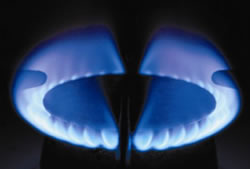
When natural gas is used as a liquid to fuel engines, the hydrocarbons are needed for a good combustion to occur. Therefore, natural gas has become an important fuel source either as a gas or liquid.
Natural gas’s composition is methane. Because methane only has one carbon in its composition, it produces very low carbon emissions. The blue flame that results from burning is due to a perfect combustion.
Natural gas is pumped directly into the consumer’s home as efficient as delivering electricity. Since natural gas is abundant in the U.S., it cuts down on oil importation. Natural gas is cheaper than oil to burn, because of its abundance, and it is probably the only fuel source that can be used in the home as well as in a vehicle. Since natural gas is lighter than air, it will dissipate if released into the air, unlike propane, which is heavier than air and pools into explosive pockets.
The disadvantage of natural gas is that it is combustible and thus can explode. Since natural gas does not have an odor, an additive is added so that a smell can be detected should there be a leak. Natural gas vehicles are not readily available as only a few vehicle models are currently offered and gas mileage is lower than with fossil fuel engines.
While alternative fuel technologies are advancing, fossil fuel will remain the prevailing fuel for decades. It’s too soon to pick the alternative fuel that will dominate the market forty or fifty years from now. One of the difficulties of predicting the dominant alternative-fuel effort today is the production method to obtain the fuel, such as corn-based ethanol, which is effected by the weather and droughts. Fossil fuel production is a known, established technology, while alternative fuel production is not.
Who knows where we will be in the future. We could see new engine technology, or another type of alternative fuel discovered. In any case, we need to keep working on the identified alternative fuels and overcome their disadvantages.
For further information:
1. http://www.nrel.gov/docs/fy99osti/26334.pdf
2. http://ntl.bts.gov/lib/44000/44100/44104/167360-1.pdf
3. http://www.fas.org/sgp/crs/misc/R42566.pdf
4. http://www.afdc.energy.gov/
The content & opinions in this article are the author’s and do not necessarily represent the views of AltEnergyMag
Comments (0)
This post does not have any comments. Be the first to leave a comment below.
Featured Product


.jpg)
